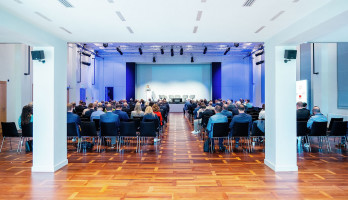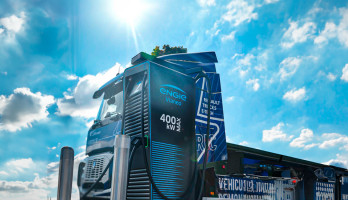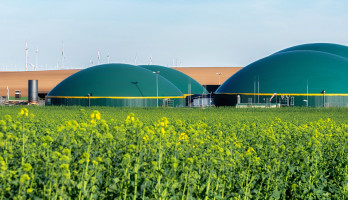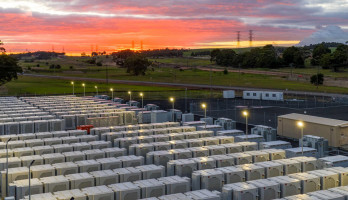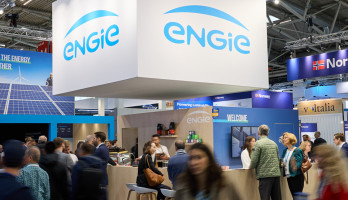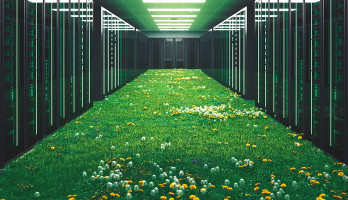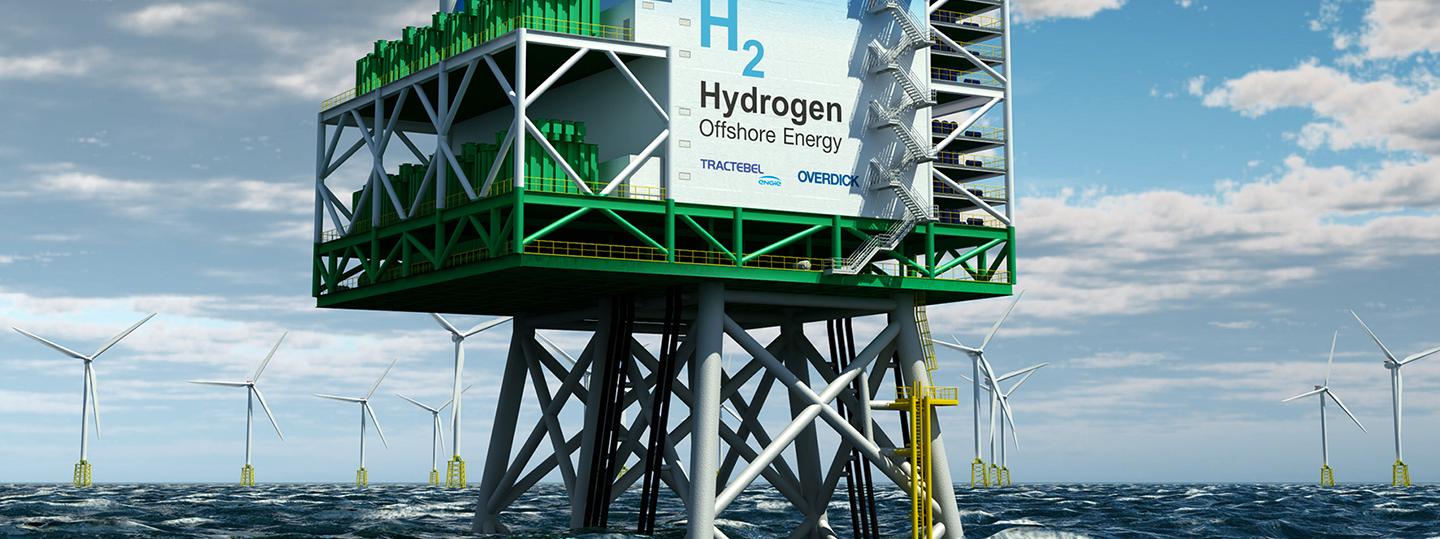
Green hydrogen - the hope of the energy transition
Hydrogen is in many ways the missing element that can allow the transition to a 100% renewable and sustainable energy system. Made from renewable energy sources by water electrolysis, green hydrogen is an emission-free multi-purpose energy carrier. The National Hydrogen Strategy adopted in the middle of the year provides for the construction of generation plants with a total output of up to 5 gigawatts by 2030 and a further 5 gigawatts by 2040 at the latest, as well as numerous possibilities for funding.
Unlike electricity, hydrogen can be stored not only for a short time, but over long periods of time and is thus available even when the renewable electricity required for its production is not being produced. This opens up completely new, 100% regenerative applications for electricity from wind and sun. Hydrogen can be added to the natural gas network or converted into synthetic methane (SNG) by the power-to-gas process and then fed into the natural gas network. This would allow the use of the existing natural gas infrastructure without conversion, including gas power plants. At present, the development of a dedicated gas transport infrastructure for 100% hydrogen is also planned by the gas grid operators. With sector coupling, electricity from renewable energies can be used in many other applications.
Wide use of green hydrogen in practice
Hydrogen is widely used in the field of mobility. In combination with battery technology, it could drive emission-free transport. In vehicles with operational restrictions, such as heavy goods vehicles, fuel cell electric vehicles (FCEVs) can close the gap between battery electric vehicles (BEVs) and vehicles with conventional internal combustion engines. Fuel cells are already being tested in regional train traffic, while passenger vehicles on long-haul routes have a considerable potential for FCEVs. Hydrogen is also being tested as fuel in shipping and logistics. It also serves as a basis for synthetic fuels, known as "power-to-liquids". These can be used in conventional combustion engines for heavy-duty or air traffic.
In industry, hydrogen is used in many ways, for example for the synthetic production of ammonia or methanol. The first step is to replace today's production of gray hydrogen from fossil fuels with green hydrogen. Numerous demonstration projects in refineries are already under way. On the way to a climate-neutral steel production, hydrogen can replace coking coal as a reducing agent in the classic blast furnace process. In the medium term, as is already being tested today, a small proportion of hydrogen can be used in the existing blast furnace process in order to reduce the CO2 emissions from steel production. Further significant reductions are possible in the long term through the conversion to the direct reduction process, in which hydrogen is used completely as a reducing agent. This method is already used in some countries, and a pilot plant can also be found in Germany. Basically, a conversion from natural gas to hydrogen can be carried out in the process. Green hydrogen is also an exciting alternative for steel finishing, metal processing or the production of flat glass. In many processes in the energy-intensive industry, electrification is not possible or only with great effort. There, hydrogen can contribute to decarbonization.
Depending on the price of electricity, green hydrogen from water electrolysis can already be cost-efficient compared to gray hydrogen. With a further reduction in the tax burden on electricity for hydrogen production, the technology will develop into a viable solution.
At the political level, there is also currently discussion on how hydrogen can be brought into the market in a competitive manner. These include climate policy instruments, such as the EEG surcharge exemption or the Carbon Contracts for Difference.
ENGIE supports the further development of hydrogen technology
Green hydrogen is still in its infancy, but the ENGIE Group is already involved in the first promising practical tests and applications:
- Hydrogen train in the Netherlands
At the beginning of 2020, a fuel-cell-powered railcar (Coradia Lint) was successfully refueled with hydrogen on the railway line between Leeuwarden and Groningen. In this test, ENGIE supplied the renewable hydrogen and operated the mobile filling station. A fuel cell generates electric current for the drive in the railcar. In the Netherlands there are about 1,000 kilometers of non-electrified railway lines. Passenger trains with fuel cells are a clean alternative to the diesel railcars used to date.
- Green hydrogen for refinery in Rotterdam
In the MULTIPLHY project, the first multi-megawatt high-temperature electrolyzer is to be built and operated in Rotterdam. In March 2020, ENGIE and other companies entered into a project partnership for highly efficient hydrogen production. With a nominal output of 2.6 megawatts, the electrolyzer will generate 60 kilograms of hydrogen per hour. The project partners want to generate a total of 9,600 tons of hydrogen for the production of high-quality biofuels by the end of 2024. 8,000 tons of greenhouse gas emissions will be saved. - Offshore hydrogen production platform
The ENGIE subsidiary Tractebel is developing a globally unique concept for a platform on the sea. The aim is the environmentally friendly production of green hydrogen on an industrial scale by means of electrolysis. The energy for this comes from offshore wind turbines. The output of such a plant can be up to 400 megawatts, a multiple of what previous technologies can produce. The transport routes for the energy generated in this way via pipeline or, in the future, possibly also by ship, are flexible. They offer alternatives to controversial or congested cable routes – by sea or by land. Compared to the production costs of gray hydrogen from fossil sources, the costs for green hydrogen are currently even higher. Among other things, a higher levy for CO2 emissions will ensure more equal opportunities. The decisive cost factor is the design of the system and the efficiency of the systems. The Tractebel concept contains the appropriate solutions for cost-optimized plant construction and efficient operation.
As a member of the European Clean Hydrogen Alliance, ENGIE actively supports the European hydrogen strategy and is committed to an ambitious expansion of hydrogen utilization by 2030. In addition, ENGIE, as part of the Hydrogen Europe industrial initiative, is committed to the further development of hydrogen technology.
Our Expert

